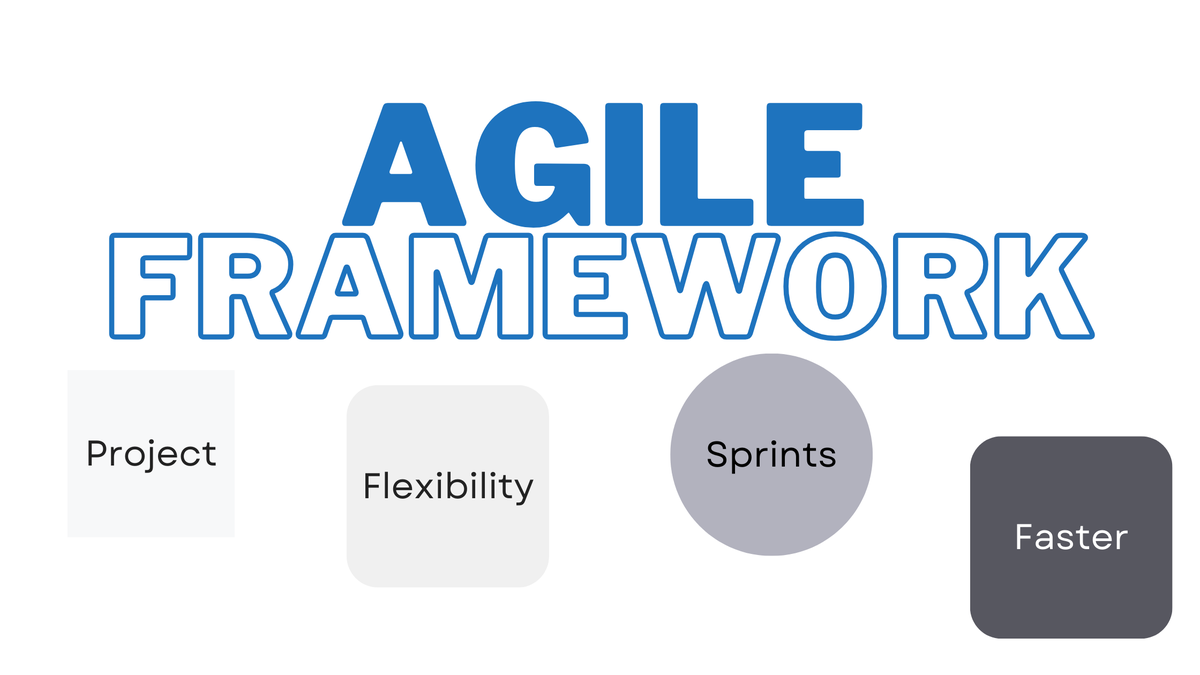In the fast-paced world of business, where adaptability is key and change is constant, traditional project management methodologies often fall short.
This is where Agile Framework steps in, offering a dynamic and flexible approach that has revolutionized project management across industries.
In this comprehensive guide, we’ll delve into the intricacies of Agile Framework, exploring its step-by-step process, how it works, and why it’s essential for businesses today.
What is Agile Framework?
Agile Framework is a project management approach that emphasizes flexibility, collaboration, and incremental progress. Unlike traditional waterfall methodologies, which follow a linear and sequential process, Agile embraces change and allows teams to respond quickly to evolving requirements and customer feedback.
Step-by-Step Process of Agile Framework:
- Project Initiation: The Agile journey begins with project initiation, where the team defines the project vision, objectives, and scope. Stakeholders collaborate to prioritize features and create a product backlog.
- Sprint Planning: In Agile, projects are divided into iterative cycles called sprints. During sprint planning, the team selects items from the product backlog to work on and defines the tasks required to complete them.
- Daily Stand-ups: Daily stand-up meetings, also known as daily scrums, keep the team aligned and focused. Each team member shares their progress, discusses any challenges, and plans their tasks for the day.
- Sprint Execution: With the plan in place, the team begins executing the tasks defined for the sprint. Collaboration and communication are key as team members work together to deliver incremental value.
- Sprint Review: At the end of each sprint, the team holds a sprint review meeting to demonstrate the completed work to stakeholders. Feedback is gathered, and adjustments are made to the product backlog as necessary.
- Sprint Retrospective: The sprint retrospective provides an opportunity for the team to reflect on their process and identify areas for improvement. By continuously learning and adapting, teams can refine their practices and enhance productivity.
How Agile Framework Works:
Agile Framework operates on core principles, including:
- Iterative Development: Projects are broken down into manageable iterations, allowing for frequent delivery of working software.
- Collaboration: Cross-functional teams collaborate closely throughout the project, fostering communication and shared ownership.
- Customer Feedback: Regular feedback from stakeholders and end-users informs decision-making and ensures that the product meets customer needs.
- Adaptability: Agile embraces change, allowing teams to respond quickly to shifting requirements and market dynamics.
Why Should We Use Agile Framework?
Agile Framework offers numerous benefits for businesses:
- Flexibility: Agile enables businesses to adapt to changing requirements and market conditions, reducing the risk of project failure.
- Faster Time-to-Market: By delivering incremental value in short iterations, Agile accelerates the delivery of products and features to market.
- Improved Quality: Continuous feedback and testing throughout the development process result in higher-quality products that better meet customer needs.
- Enhanced Collaboration: Agile fosters collaboration and transparency, breaking down silos and promoting cross-functional teamwork.
- Increased Customer Satisfaction: By involving stakeholders throughout the project and delivering value early and often, Agile ensures that the final product aligns with customer expectations.
What are the Benefits of Agile?

The benefits of Agile include:
- Increased Adaptability: Agile allows teams to respond quickly to changes in requirements and market dynamics, improving overall project outcomes.
- Higher Productivity: By breaking projects into smaller, manageable tasks and delivering value in short iterations, Agile teams can maintain momentum and productivity.
- Better Risk Management: Continuous feedback and frequent delivery reduce the risk of project failure by enabling early detection and mitigation of issues.
- Enhanced Stakeholder Engagement: Agile encourages collaboration and involvement from stakeholders throughout the project, leading to greater satisfaction and buy-in.
- Continuous Improvement: Through regular retrospectives and feedback loops, Agile teams continuously learn and refine their processes, driving continuous improvement and innovation.
Which Companies Should Apply the Agile Framework?
Agile Framework is well-suited for companies operating in dynamic and rapidly changing industries, such as software development, IT, marketing, and product development.
Startups and small-to-medium enterprises (SMEs) can particularly benefit from Agile’s flexibility and ability to scale.
Which Companies Should Not Apply the Agile Framework?
While Agile is highly adaptable, it may not be suitable for every organization. Companies with rigid hierarchical structures or highly regulated environments may struggle to implement Agile effectively.
Additionally, organizations with long-standing processes deeply ingrained in traditional methodologies may encounter resistance to change.
Overall Percentage of Companies Using Agile Framework
As of recent statistics, approximately 71% of organizations worldwide report using Agile approaches in some form or another.

This percentage continues to grow as businesses recognize the benefits of Agile in driving innovation, increasing productivity, and staying competitive in today’s fast-paced market.
Conclusion:
In conclusion, Agile Framework has emerged as a game-changer in project management, offering a flexible and collaborative approach that aligns with the demands of modern businesses.
By embracing Agile principles and practices, companies can unlock greater efficiency, innovation, and success in their projects.
Whether you’re a startup striving for rapid growth or an established enterprise seeking to stay ahead of the curve, Agile Framework holds the key to unlocking your full potential.

